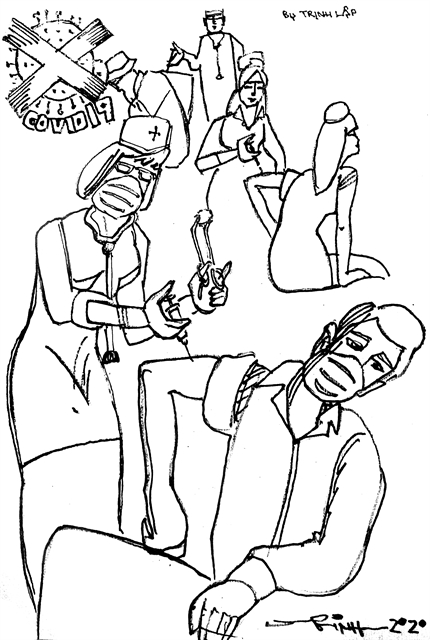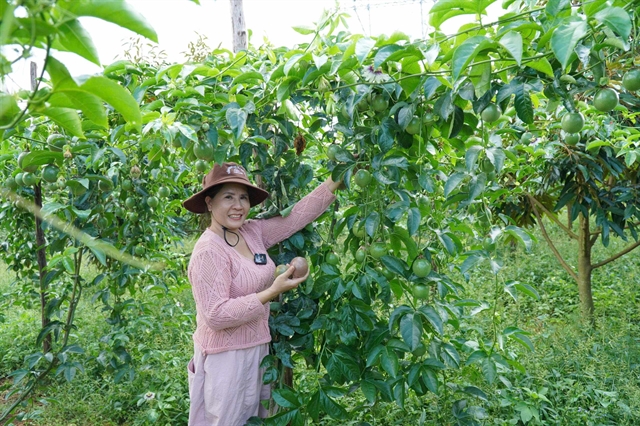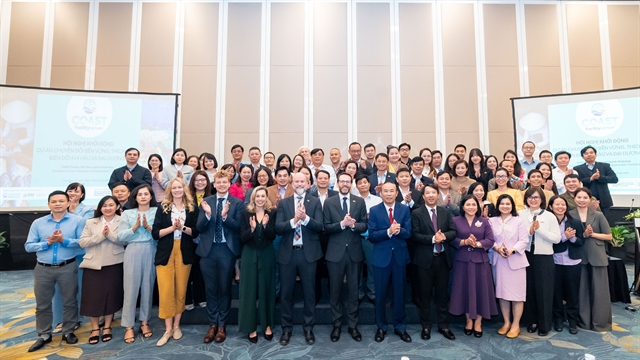 Talk Around Town
Talk Around Town

Việt Nam this week announced it was seeking volunteers to take part in the first phase of a Made-by-Việt Nam vaccination programme. But we should not let slip the sound practices we have adopted, like wearing face masks, washing our hands regularly, and rinsing our nose and throat morning and night with a safe liquid.

|
| Illustration by Trịnh Lập |
by Nguyễn Mỹ Hà
Việt Nam this week announced it was seeking volunteers to take part in the first phase of a Made-by-Việt Nam vaccination programme. A group of 40-60 healthy volunteers aged between 18-40 will be taking part, with the first injections scheduled for December 17.
Recently appointed Minister of Health Nguyễn Thanh Long has so far successfully steered the country’s resistance against COVID-19 since the first patient tested positive back on January 23.
Việt Nam has so far been able to keep both the infection rate, the cured rate, and the death rate under strict control, with concerted efforts made among the health sector and border patrol forces together with travel bans and a strict social distancing period of three weeks back in April, with all schools closed for four months.
Health officials also announced an early kick-start of the second phase, scheduled to begin in March with a larger pool of volunteers, to further assess the ability to generate antibodies to detect, engulf, and fight invading viruses.
The third phase will involve an even larger group of 10,000 people or more, according to Dr Nguyễn Ngô Quang, deputy head of the Ministry of Health’s Department of Science, Technology and Training.
The vaccination tests will be implemented by the Military Medical Academy and four other labs that have been working against time to develop their own lab-tested vaccine.
I recently came across a first-account essay from my graduate professor in the US, saying she had participated in the Pfizer vaccination programme at Mount Sinai Hospital in New York City. She was involved in the second round of tests, which included elderly people. She’s in her mid-60s and had two injections, with a slight rise in temperature, which she reported to the test monitor.
This shows that the vaccination testing system in the US had gone ahead earlier than in Việt Nam. But what she did not say, and what the programme here in Việt Nam failed to mention, is what has been injected into the volunteers.
A popular vaccination method for six cured diseases — polio, measles, mumps, typhoid, yellow fever, and rabies is by injection of agent-specific but relatively harmless antigenic components that in vaccinated people can induce protective immunity against the corresponding infectious agent, therefore protecting people from becoming infected.
The World Health Organisation has been running successful immunisation programmes around the world for more than a dozen infectious diseases that used to kill millions of children around the world.
But vaccinations cannot prevent all infectious diseases.
Let’s take the characteristic features of the new coronavirus. It’s a retrovirus, which means it can travel easily from one bearer to another and from species to species.
Look at its round shape, which helps it move more easily. “It’s quite mischievous,” a researcher at Hà Nội’s Pasteur Institute told me back in March when her team successfully captured the tiny red crown virus that has now killed millions, shut down borders, grounded commercial airlines, struck down tourism around the world, and put millions out of work. And there has been no indication the pandemic will end any time soon.
What, then, is a retrovirus and what do we need to fundamentally understand about it?
The term retro has nothing to do with images of extravagant hairstyles or fashion from days long gone. “A retrovirus belongs to a group of single-strand RNA viruses,” according to the above-mentioned researcher.
Cell biology has it that in a retrovirus, an enzyme allows the production of DNA (Deoxyribonucleic acid) from RNA (Ribonucleic acid), hence its name.
The transcription of DNA to RNA involving a certain segment of DNA being copied and turned into RNA using an enzyme is called RNA polymerase.
Scientists say that viruses cannot duplicate on their own because they lack the cells and genes for reproduction, so they need a host cell to complete their life-cycle.
The common cold can shed some light into this transcription: virions, the virus particles that are infective, burst out when someone with a cold sneezes.
If that person isn’t wearing a facemask, which could have contained these infectious virions, then people nearby may inhale them into their respiratory system, with these virions sticking to the lining of the nose and throat and injecting their RNA into the host cells.
When the cold virions have invaded the host cells, the viral genome is turned into more viral proteins and genomes as the host’s cells replicate, and as a result invade more cells.
“A retrovirus inserts its genome into the host genome then becomes a part of the host cells,” the researcher explained. “Retroviruses have a special protein that can turn the RNA genome into DNA. This new DNA invades the host DNA, and the host cells get tricked into making a large number of proteins for the virus.”
“The most common retrovirus,” she said, “is HIV.”
Now yours truly may be on the same ground with researchers as to why retroviruses are so deadly.
HIV multiplies rapidly, with some strains becoming drug-resistant. It was first isolated and discovered at the Pasteur Institute in Paris in 1983.
The quest for an HIV vaccine has taken 37 years to date and continues.
Scientists also say that a retrovirus’s rapid replication makes vaccine development all the more complicated.
“Newly developed strains that are unaffected by vaccines can still infect those who were vaccinated against the original or earlier strain,” she told me.
It looks like this new coronavirus has been playing a chasing game. When we think we have captured it in our hands, some virions have already slipped through our fingers, duplicated, and found new hosts.
Until now, the so-called herd immunity theory does not seem to have worked anywhere.
Việt Nam did not follow this theory because its medical system is so poor it cannot withstand a huge number of community infections.
So far, knowing our own weak points and acting accordingly has helped Việt Nam stand on its own feet.
As for vaccine development, we know it needs to be done but we should not let slip the sound practices we have adopted, like wearing face masks, washing our hands regularly, and rinsing our nose and throat morning and night with a safe liquid.
And keep any sneezes inside your mask as well!
So a big thank you to those new heroes of our time, for volunteering to take the COVID vaccine for the sake of future generations! VNS




